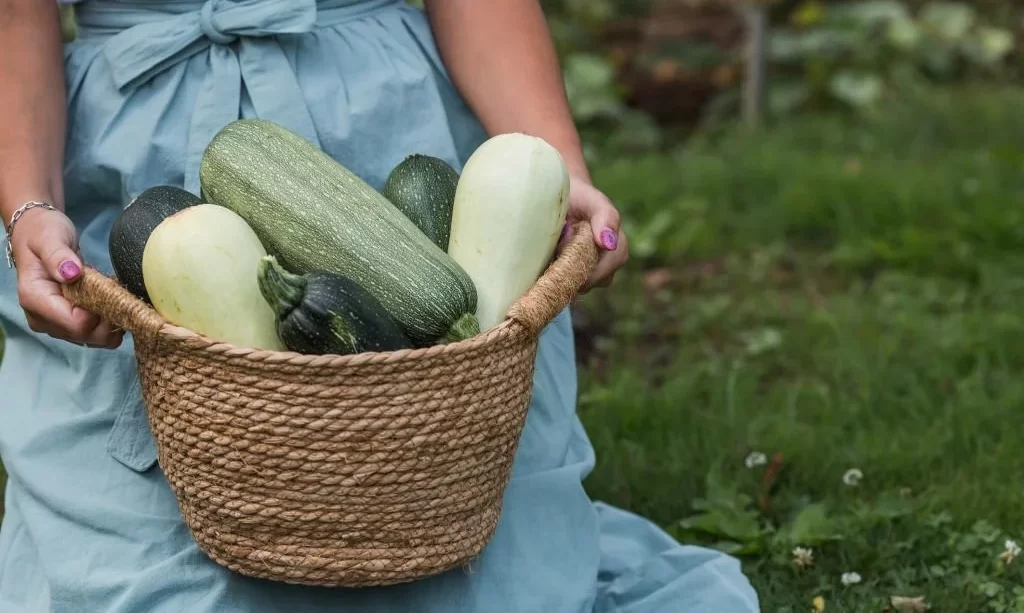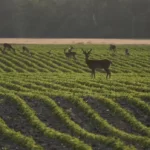Zucchini, with its vibrant green color and versatility in the kitchen, is a beloved summer vegetable that finds its way into a wide range of dishes, from stir-fries to salads. However, like all fresh produce, zucchini has a limited shelf life, and knowing how to determine if it has gone bad is essential to prevent food waste and ensure safe consumption. In this guide, we will explore the telltale signs that indicate zucchini may be past its prime. By recognizing these visual cues, you can confidently select the freshest zucchinis for your meals and avoid any that have seen better days.
- 1 POUND PER ORDER
Visual Signs of Spoilage
The first and most apparent way to assess the freshness of zucchini is by examining its appearance. Here are visual signs to watch for that may indicate zucchini is no longer at its best:
- Mold or Mildew Growth: The presence of mold or mildew, visible as fuzzy or powdery spots on the skin, is a clear indicator of spoilage. Avoid zucchinis with mold growth.
- Soft or Mushy Spots: Gently squeeze the zucchini. If you notice any soft or mushy spots, particularly around the stem or blossom end, it may be an indication of overripeness or decay.
- Wrinkled or Shriveled Skin: Fresh zucchini should have smooth, firm skin. If you observe wrinkling, shriveling, or deep grooves on the surface, it’s a sign that the zucchini is past its prime.
- Discoloration: Dark spots, browning, or discoloration on the skin can suggest spoilage. While small blemishes may be trimmed, extensive discoloration is a clear warning sign.
By paying close attention to these visual cues, you can make informed choices when selecting zucchini and avoid any that show signs of spoilage. In the following sections, we’ll explore additional ways to assess zucchini’s freshness, including changes in texture and odor.
Texture Changes
Texture changes in zucchini can be a telling indicator of its freshness. When examining zucchini, pay attention to the following texture-related signs that may suggest spoilage:
- Sogginess or Excessive Moisture: Fresh zucchini should have a crisp and slightly firm texture. If you notice that the zucchini feels excessively wet or soggy when touched, it may be a sign of decay or internal moisture buildup.
- Sliminess on the Surface: Run your fingers along the zucchini’s skin. If you encounter a slimy or slippery texture on the surface, it’s a strong indication that the vegetable has started to deteriorate.
- Mushy or Overly Soft Feel: Gently press the zucchini with your thumb. A fresh zucchini should yield slightly but still maintain its firmness. If it feels mushy or overly soft, especially in localized areas, it may be past its prime.
Unpleasant Odors
The sense of smell can also provide valuable information about the freshness of zucchini. Pay attention to any odors emanating from the vegetable, as they can reveal its condition:
- Sour or Rancid Odor: A zucchini that has gone bad may emit a sour or rancid odor, particularly around the stem or blossom end. This unpleasant smell is a clear sign that the vegetable is no longer safe to eat.
- Mild, Earthy Scent: In contrast, a fresh zucchini should have a mild, earthy scent, similar to other members of the squash family. A subtle aroma is a positive indication of its freshness.
Taste Test
While visual and textural cues are valuable for assessing zucchini’s freshness, a taste test can provide the most definitive confirmation. However, exercise caution when performing a taste test, especially if the zucchini exhibits any of the aforementioned signs of spoilage. Here’s how to conduct a taste test:
- Take a small, safe nibble of the zucchini, preferably from a part that appears to be in good condition.
- Pay close attention to the flavor. Fresh zucchini should have a mild, slightly sweet, and earthy taste.
- If you detect any bitterness, an off-putting or sour flavor, or an unpleasant aftertaste, it’s a clear indication that the zucchini has deteriorated, and it should be discarded.
Performing a taste test can provide you with the most accurate assessment of the zucchini’s quality. However, if you have any doubts about its safety or freshness, it’s advisable to err on the side of caution and discard it to avoid potential foodborne illness.
Shelf Life and Storage Tips
To make the most of your zucchini and extend its shelf life, consider the following guidelines:
- Shelf Life: Whole zucchinis can typically last up to a week when stored in the refrigerator. However, they are at their best within the first few days after purchase or harvest. Cut zucchini should be consumed within 2-3 days to maintain optimal freshness.
- Refrigeration: Store zucchini in the crisper drawer of your refrigerator or in a perforated plastic bag to maintain humidity and prevent drying out.
- Avoid Moisture: Keep zucchinis dry to prevent mold growth and maintain their texture. Do not wash them until you are ready to use them.
- Regular Checks: Periodically inspect your zucchinis for any signs of spoilage, even if they appear fine at first. Visual and textural changes can occur relatively quickly.
By adhering to these storage tips and staying vigilant for any signs of spoilage, you can enjoy the delicious taste and nutritional benefits of fresh zucchini while minimizing food waste in your kitchen. In the conclusion, we’ll summarize the key points of assessing zucchini’s freshness and making informed decisions when selecting and using this versatile vegetable.
Reducing Food Waste
Minimizing food waste is not only good for your wallet but also for the environment. When it comes to zucchini, there are several ways to reduce waste:
- Regular Inspection: Periodically check your zucchini, both whole and cut pieces, for any signs of spoilage. This practice helps you identify and address any issues early, preventing the need to discard large quantities.
- Creative Cooking: If you have zucchini that’s slightly overripe or not at its freshest, consider using it in recipes that can mask subtle texture changes or flavors. Zucchini can be added to soups, stews, frittatas, and baked goods like zucchini bread.
- Freezing: If you have excess zucchini, particularly when it’s in its prime, consider freezing it. Simply slice or chop the zucchini, blanch it briefly in boiling water, cool it in ice water, and then freeze it in airtight containers or freezer bags. Frozen zucchini can be used in various dishes, including stir-fries and casseroles.
- Composting: If you find zucchini that’s beyond salvaging, consider composting it instead of sending it to the landfill. Composting reduces waste and contributes to healthier soils.
Conclusion
In conclusion, knowing how to tell if zucchini is bad is a valuable skill that helps you make informed choices when selecting and using this versatile vegetable. By paying attention to visual cues, texture changes, unpleasant odors, and conducting a taste test when in doubt, you can confidently enjoy fresh zucchini while avoiding potential foodborne issues.
Additionally, understanding the zucchini’s shelf life and following proper storage guidelines ensures that it remains at its best for as long as possible. Remember to inspect your zucchinis regularly, especially in the fridge, to catch any signs of spoilage early.
By incorporating these practices into your culinary routines, you can make the most of zucchini’s delicious flavor and nutritional benefits while contributing to the reduction of food waste, benefiting both your household and the environment.




